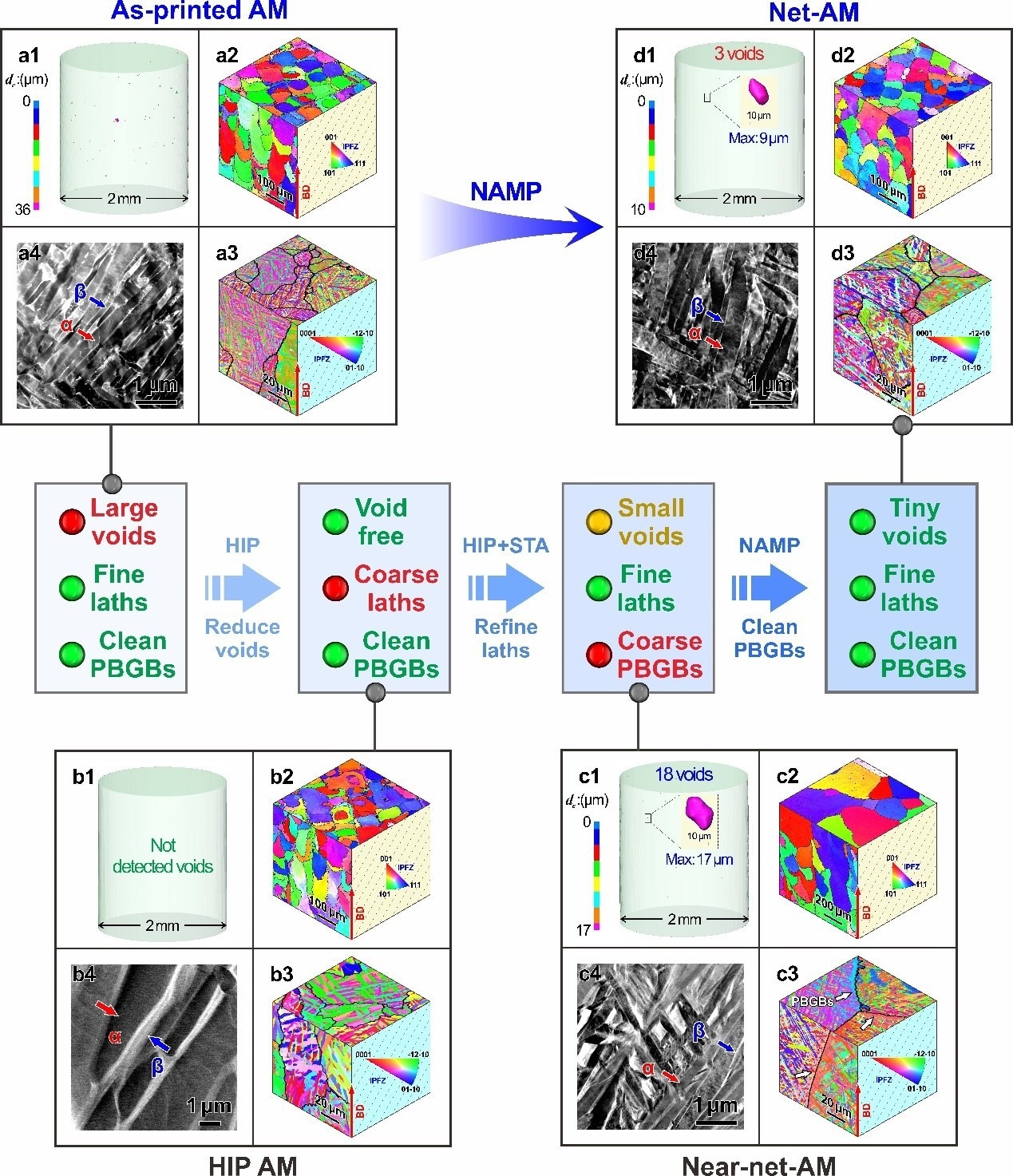A research team led by professors Zhang Zhefeng and Zhang Zhenjun from the Institute of Metal Research (IMR) of the Chinese Academy of Sciences has proposed a novel strategy for fabricating an anti-fatigue 3D-printed titanium alloy by separately regulating its microstructure and defects. The new method is referred to as net-additive manufacturing preparation (NAMP).
 Microvoid distribution and microstructure of as-printed state and other three states. Image Credit: IMR
Microvoid distribution and microstructure of as-printed state and other three states. Image Credit: IMR
The study was released on February 28th, 2024, in the journal Nature.
Three-dimensional (3D) printing, or additive manufacturing (AM), is a revolutionary technique in the manufacturing industry. However, the application of such materials as structural components in significant domains like space exploration and aviation is severely limited by the poor fatigue performance of 3D-printed materials under cyclic loading—compared with traditional production.
In the study, the researchers introduced a fresh idea regarding their previous fatigue prediction theories, suggesting that 3D-printed microstructures, known as Net-AM microstructures, inherently possess naturally high fatigue resistance. However, the low-fatigue performance of 3D materials could be compromised by the negative effects of microvoids induced by the current printing process.
To validate this hypothesis, they devised the Net-Additive Manufacturing Process (NAMP), incorporating a hot-isostatic pressing (HIP) step to eradicate microvoids, followed by a subsequent high-temperature-short-time (HTSt) heat treatment to refine the AM microstructure with fine martensite lath.
This process effectively restores a nearly void-free Net-AM microstructure in titanium alloy. Intriguingly, the Net-AM microstructure exhibits exceptionally high fatigue resistance, surpassing that of all other additively manufactured and even forged titanium alloys. Moreover, it demonstrates the highest specific fatigue strength (fatigue strength/density) among all reported materials worldwide.
It is interesting to note that the Net-AM microstructure has extremely high fatigue resistance compared to all other titanium alloys, including those that are forged and additively formed. Of all materials published worldwide, the Net-AM microstructure demonstrates the best specific fatigue strength (i.e., fatigue strength/density).
Utilizing the NAMP process, the microstructures were able to avoid many traditional fatigue weaknesses and localized damage accumulation, resulting in extremely high fatigue resistance. The fatigue cracks of these microstructures usually nucleated at clean primary β grain boundaries and fine martensite lath.
This study demonstrates the 3D-printed microstructure’s inherent high fatigue resistance and highlights the potential benefits of 3D printing technology for the fabrication of structural components. It also lays out specific guidelines for the creation of 3D-printed anti-fatigue materials.
Journal Reference:
Qu, Z., et. al. (2024) High fatigue resistance in a titanium alloy via near-void-free 3D printing. Nature. doi:10.1038/s41586-024-07048-1